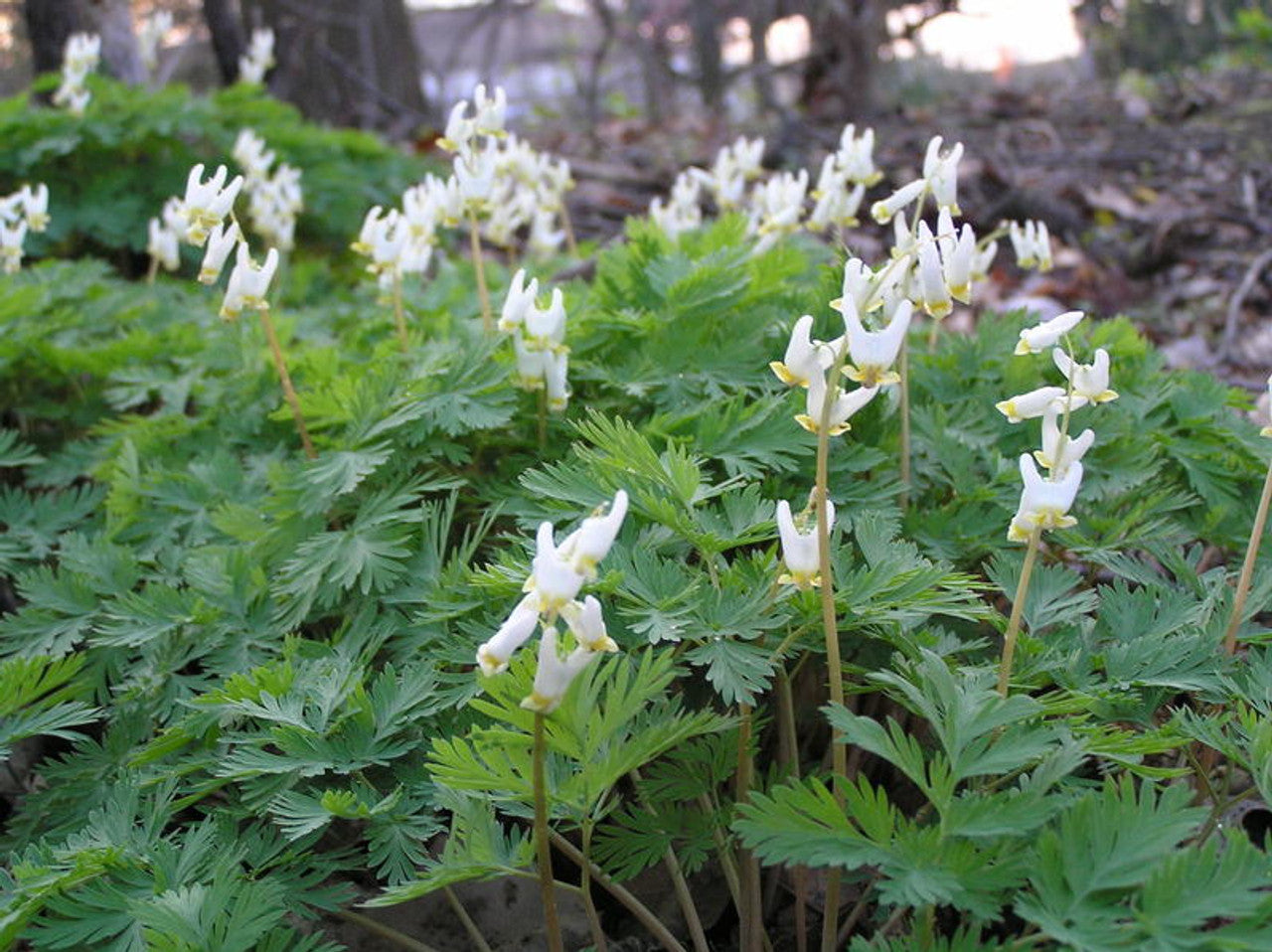
Dutchman's Breeches
Dutchman’s Breeches is a native perennial plant in the Poppy family (Papaveraceae) known for its uniquely shaped, delicate flowers and early spring emergence. It is native to eastern North America, particularly in rich, deciduous forests, where it adds a touch of whimsy and charm to shaded woodland gardens. With its soft, fern-like foliage and distinctive flowers that resemble little pairs of pants hanging on a clothesline, it’s a favorite among gardeners who appreciate plants that have character and a story.
Do Dutchman's Breeches bloom in early spring?
The plant itself emerges in early spring, sometimes when the ground is still quite cool. It has finely divided, fern-like foliage that serves as a soft, lacy backdrop for its dangling flowers. Each flower is heart-shaped, with a subtle curve and delicate spurs that give it a somewhat whimsical appearance. This, along with the idea of the flowers resembling little pairs of pants on a line, led to the common name Dutchman’s Breeches.
Blooming in mid- to late-spring, Dutchman’s Breeches quickly attracts early pollinators, including a variety of native bees. The flowers are especially attractive to native bees that are active early in the season. Native bumblebees are able to “buzz pollinate” Dutchman’s Breeches in order to extract the nectar within its flowers.
Is Dutchman's Breeches a spring ephemeral?
As a spring ephemeral, the plant completes much of its growth and flowering before the forest canopy fully leafs out, taking advantage of the bright, filtered light of early spring. By early summer, the foliage fades and the plant becomes dormant, retreating underground to its tubers until the next season. This natural cycle allows for planting companion perennials, such as ferns, hostas, and wild ginger, which fill in as the Dutchman’s Breeches dies back, providing ground cover and interest throughout the rest of the growing season.
Ecologically, Dutchman’s Breeches is beneficial for native pollinators, especially those that emerge early in the season, such as bumblebees. In terms of its ecological role, Dutchman’s Breeches provides nectar and pollen for early pollinators. Native bumblebees are able to “buzz pollinate” the flowers in order to extract the nectar within.
In the landscape, Dutchman’s Breeches can be used to naturalize areas of the garden over time. It’s also a charming addition to shaded borders or woodland gardens, paired with other shade-loving perennials. Its fine texture and subtle beauty make it a favorite among gardeners who appreciate the less-is-more approach to gardening, and it can also be used effectively in naturalized or “wild” gardens.
How to plant Dutchman's Breeches?
Plant in humus-rich, well-draining soil in partial to full shade. Low maintenance, deer resistant, and long-lived once established, it’s a great choice for gardeners who want to add native charm to their shaded areas.





